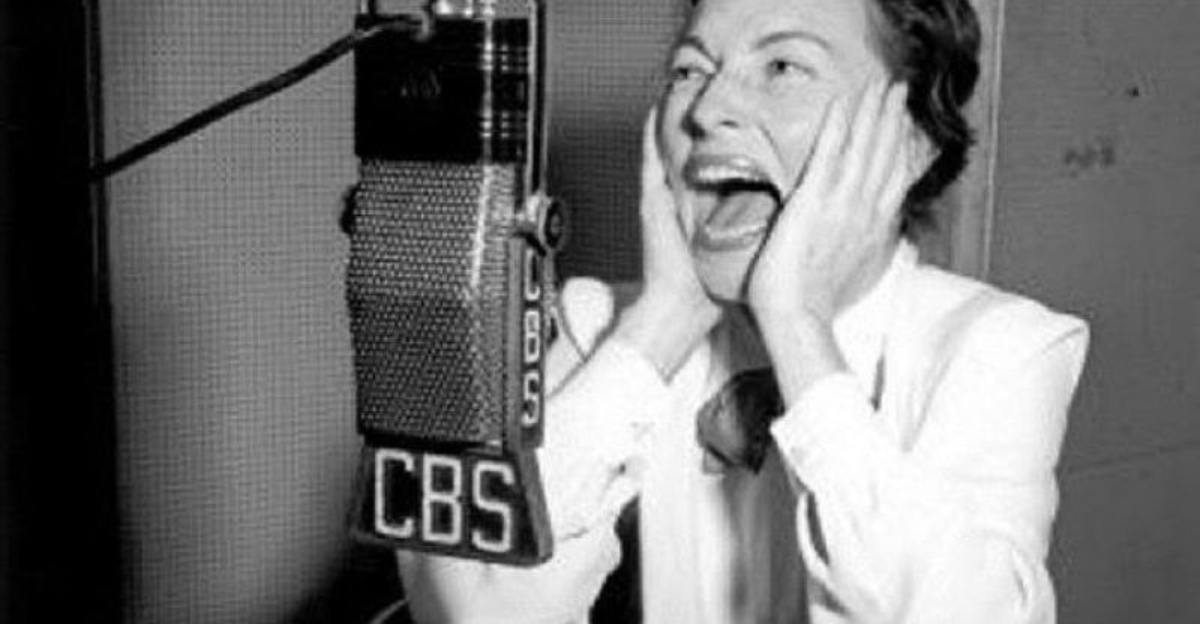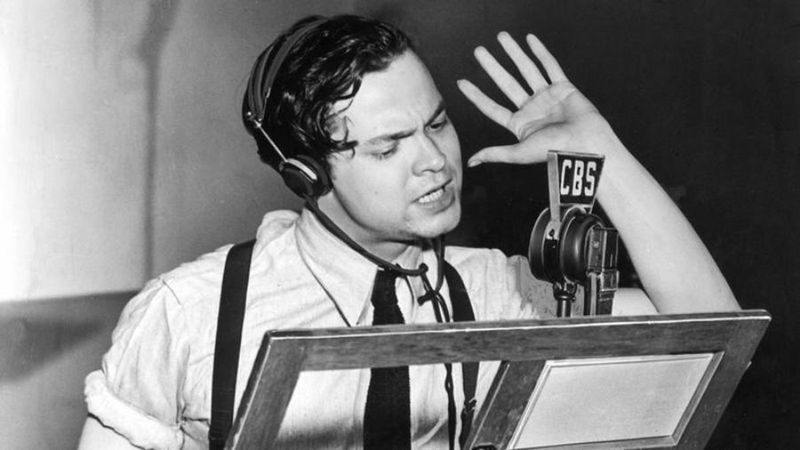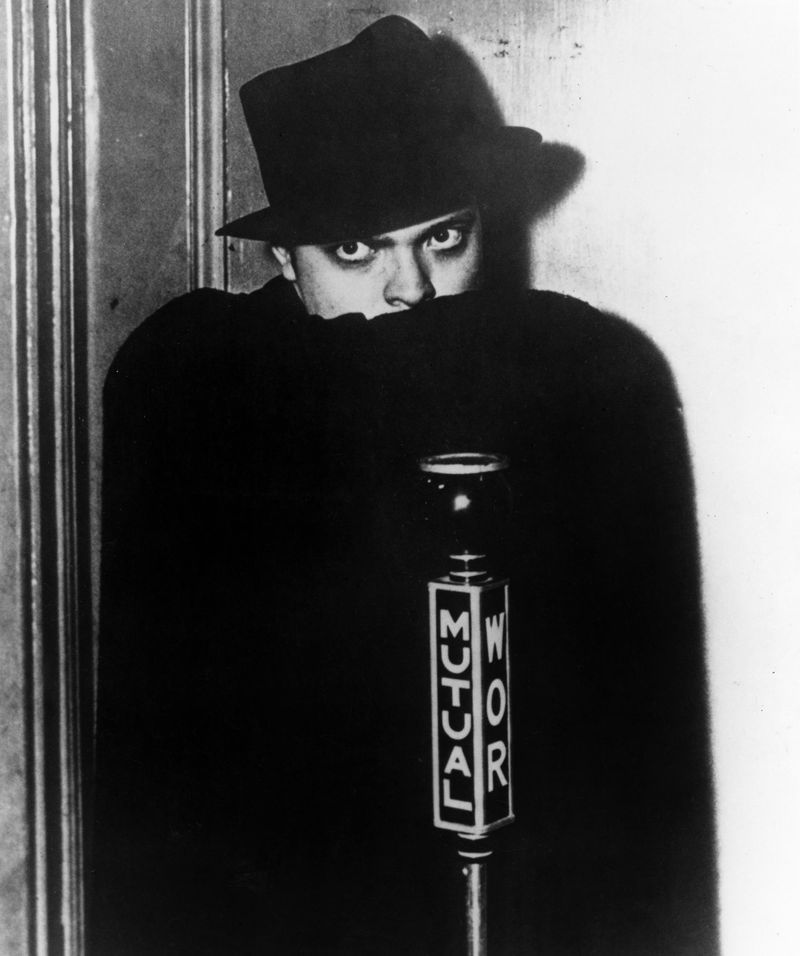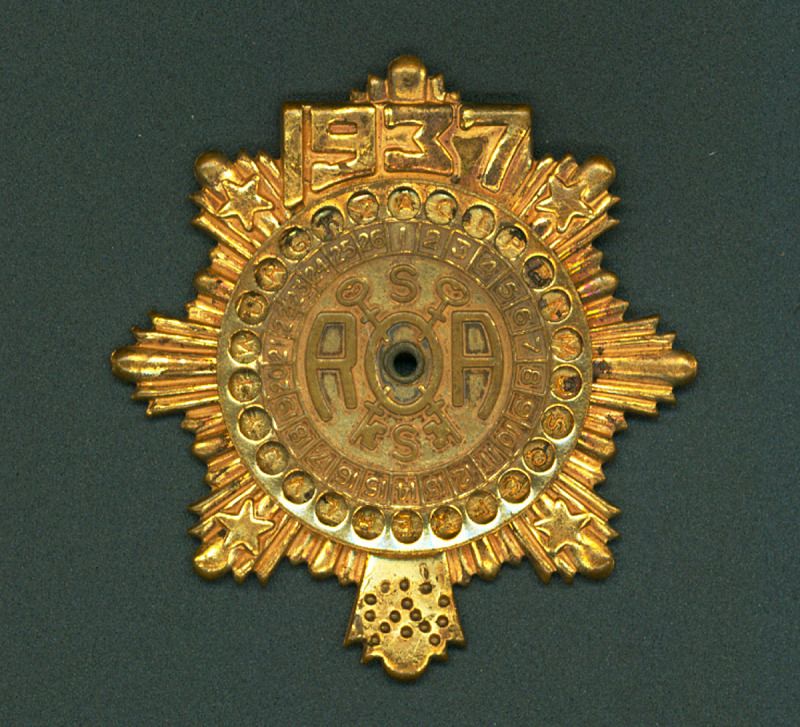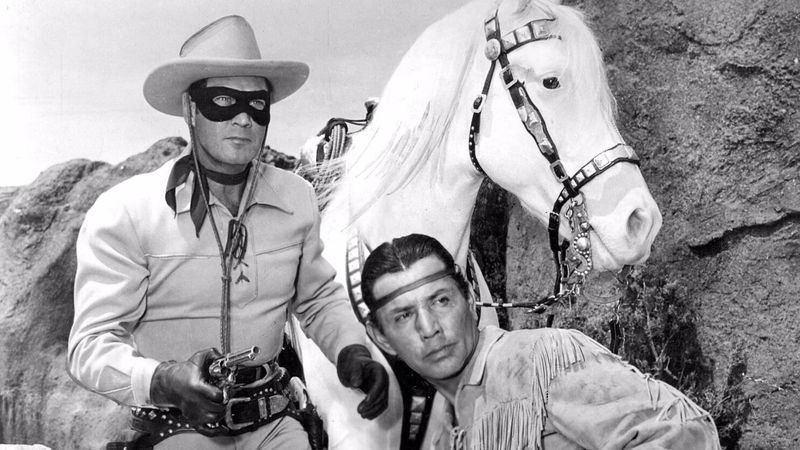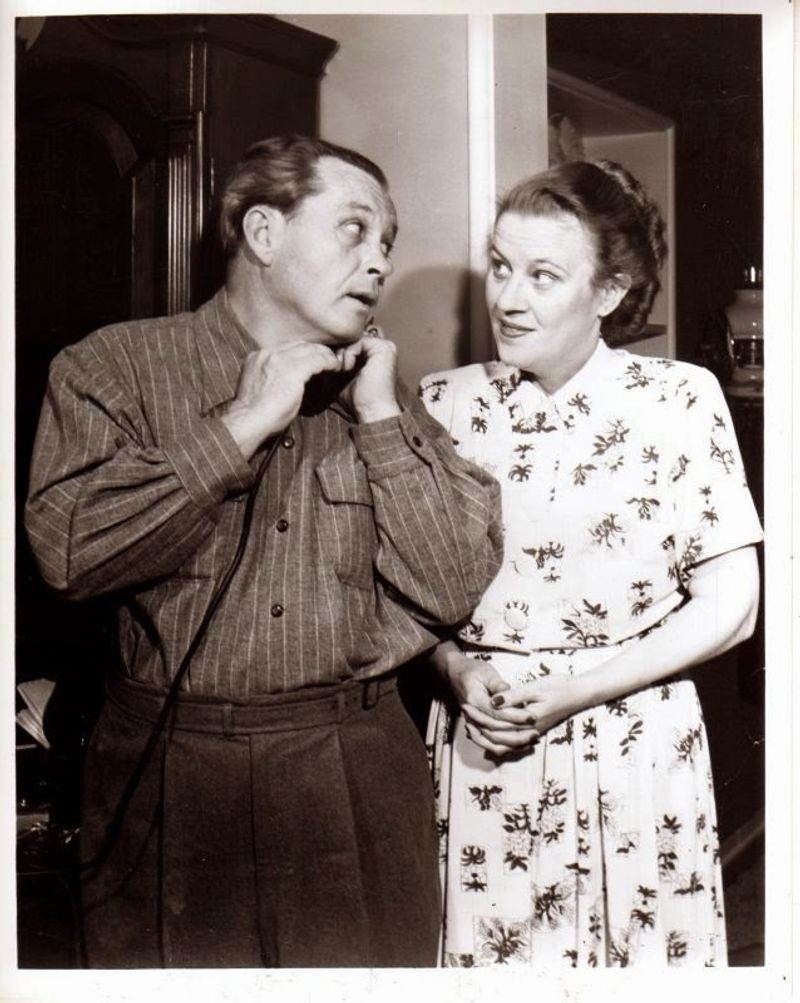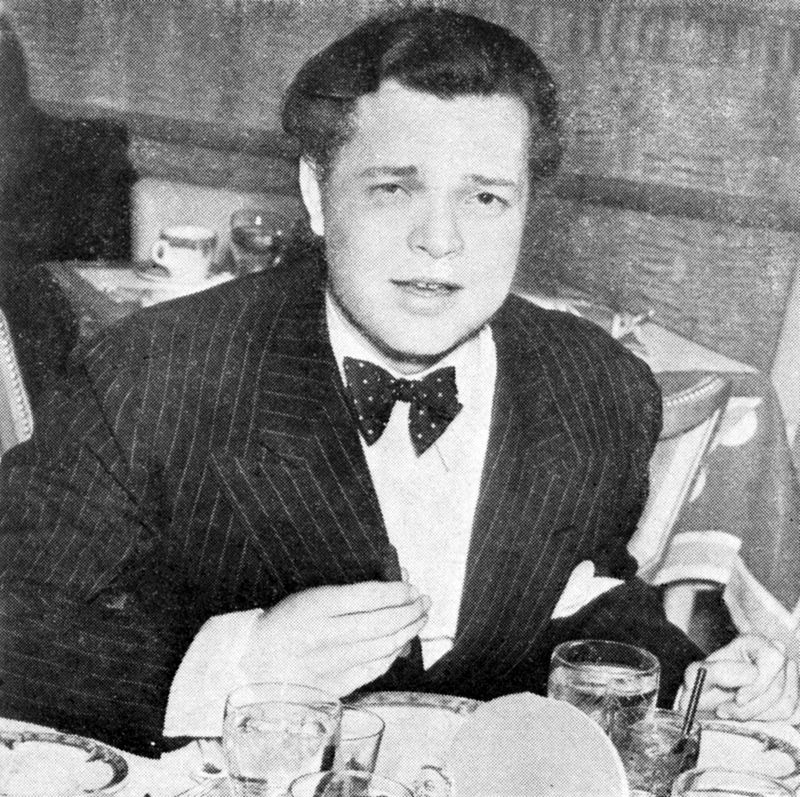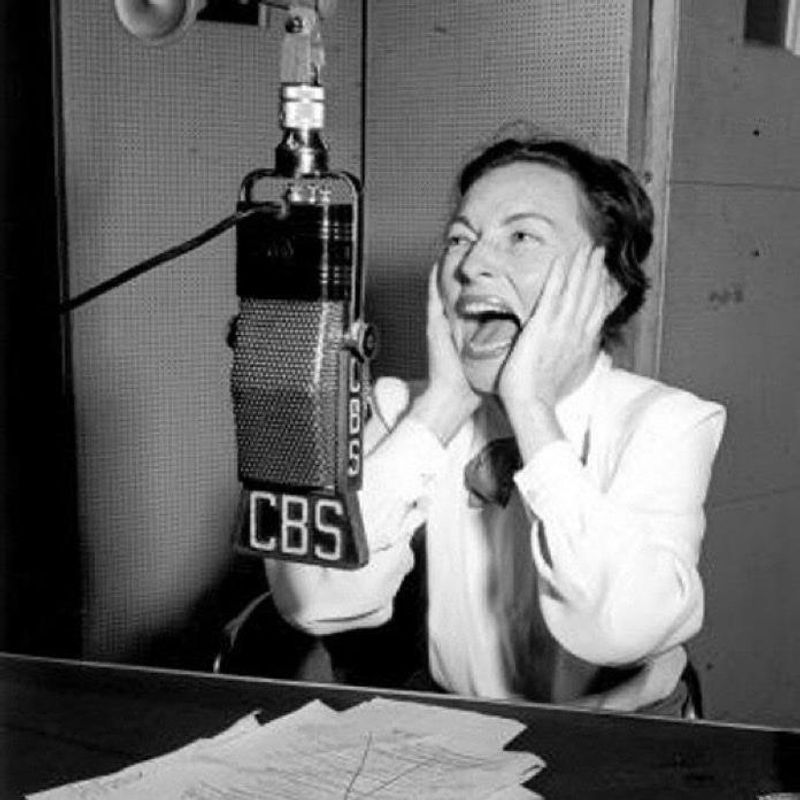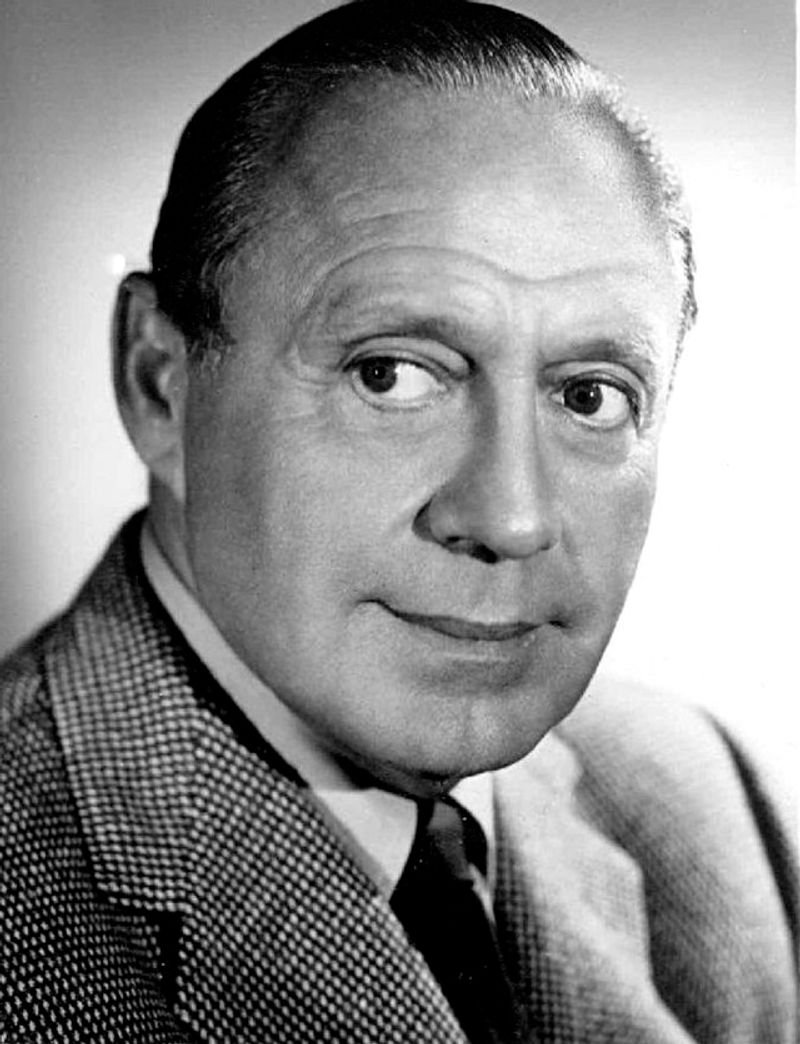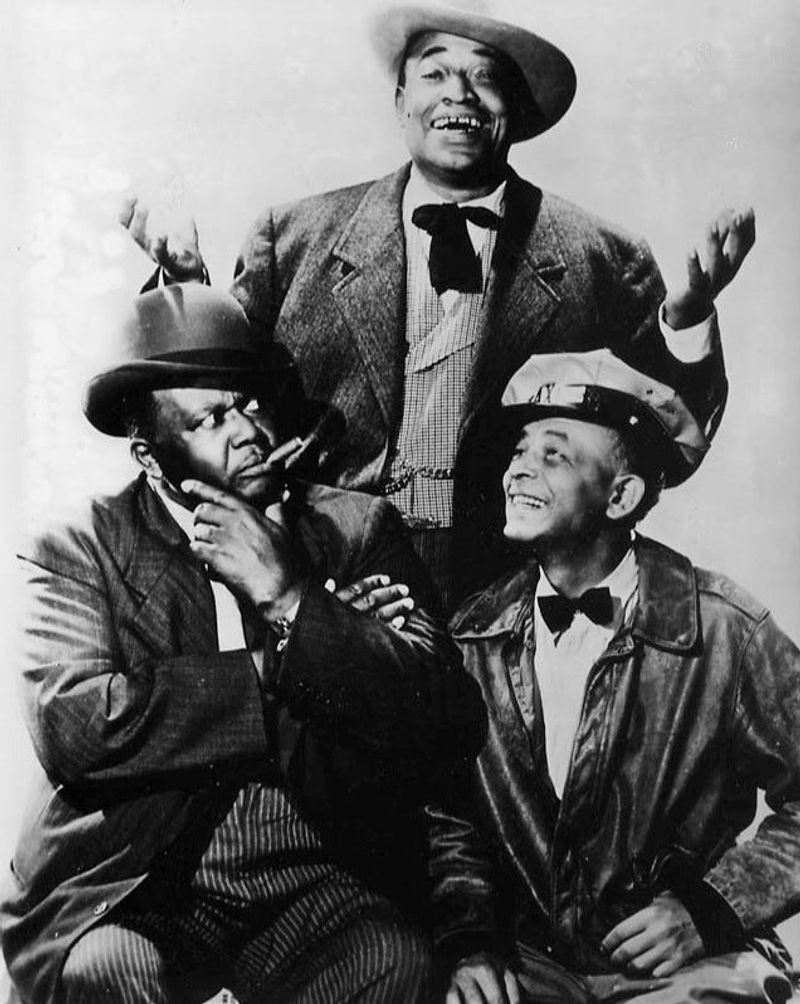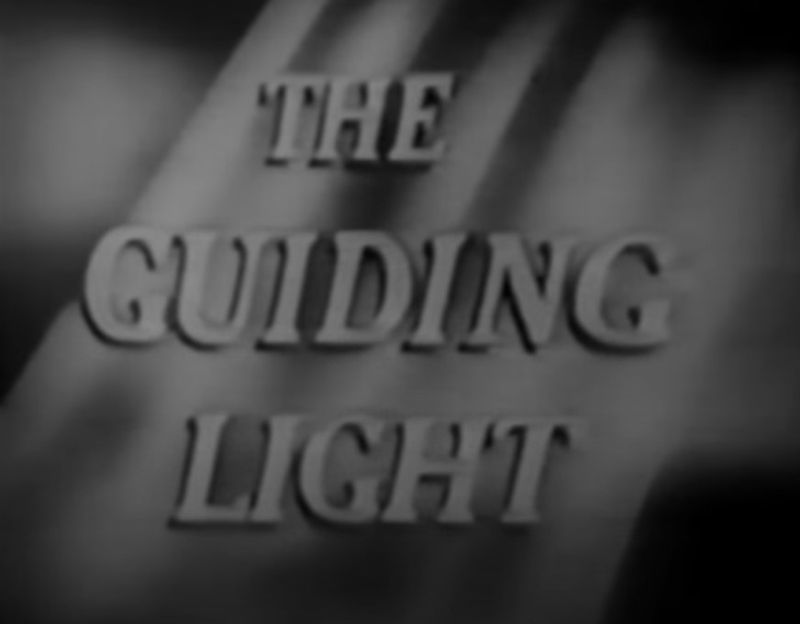Long before streaming services dominated our entertainment choices, families gathered around a different kind of screen – one made entirely of sound.
Radio shows of the early to mid-20th century weren’t just programs; they were cultural events that shaped American evenings and sparked imaginations across the country.
These audio adventures created mental pictures far more vivid than any modern CGI, transforming living rooms into theaters of the mind.
1. The War of the Worlds Panic
On Halloween Eve 1938, Orson Welles accidentally terrified America with his realistic broadcast of alien invasion. The Mercury Theatre’s adaptation was so convincing that listeners who tuned in late missed the disclaimer that it was fiction.
Panic erupted in some areas as frightened citizens called police stations or fled their homes. This accidental hoax demonstrated radio’s powerful grip on the American psyche, proving that audio drama could feel more real than reality itself.
2. The Shadow Knows What Evil Lurks
“Who knows what evil lurks in the hearts of men? The Shadow knows!” That iconic introduction sent shivers down listeners’ spines from 1937 to 1954. The mysterious Shadow, with his ability to “cloud men’s minds,” fought crime using powers he learned in the East.
A young Orson Welles voiced the character early on, adding theatrical gravitas to the role. The show’s blend of supernatural elements and detective work created a formula that influenced countless superheroes for generations to come.
3. Little Orphan Annie’s Secret Society
Beyond the famous Broadway musical, Little Orphan Annie began as a beloved radio serial that ran from 1930 to 1942. Children nationwide raced home from school to catch Annie’s adventures with her dog Sandy and benefactor Daddy Warbucks.
The show pioneered marketing to kids through its coveted decoder pins and Secret Society. Young listeners eagerly collected box tops from Ovaltine to join Annie’s inner circle, creating one of radio’s first fan communities. The secret codes at each episode’s end kept millions of children faithfully tuned in.
4. The Lone Ranger’s Silver Bullets
“Hi-yo, Silver, away!” From 1933 to 1956, The Lone Ranger and his faithful companion Tonto galloped through speakers across America. The masked former Texas Ranger fought for justice in the Old West with his trademark silver bullets symbolizing justice and restraint.
Actor Brace Beemer voiced the character longest, though most listeners never knew his name. The show’s opening theme – Rossini’s “William Tell Overture” – became permanently associated with cowboys and adventure, while its strict moral code influenced children’s entertainment for decades.
5. Fibber McGee’s Infamous Closet
From 1935 to 1959, listeners flocked to 79 Wistful Vista to visit Fibber McGee and Molly. This beloved sitcom centered on the McGees, with Jim Jordan playing the lovable blowhard Fibber opposite his real-life wife Marian as the patient Molly.
The show’s most famous running gag – Fibber’s catastrophically overstuffed closet – created radio’s greatest sound effect. The prolonged, escalating cascade of crashing objects became so iconic that “Fibber McGee’s closet” entered American slang as shorthand for any chaotic, overfilled storage space.
6. The Mercury Theatre’s Artistic Revolution
Beyond the infamous War of the Worlds broadcast, Orson Welles’ Mercury Theatre on the Air (1938-1940) revolutionized radio drama through sophisticated adaptations of literature and innovative sound techniques. Operating without commercial sponsorship initially, Welles had unprecedented artistic freedom.
The company tackled Dracula, Treasure Island, and Julius Caesar with cinematic sound design and emotional depth. Though short-lived, the Mercury Theatre elevated radio from mere entertainment to legitimate art form. Their experiments in audio storytelling established techniques still used in podcasts and audiobooks today.
7. Suspense’s Psychological Thrills
“And now… Suspense!” For over 20 years (1942-1962), this anthology series delivered psychological thrills that kept Americans perched nervously on the edges of their seats. Unlike horror shows focused on supernatural monsters, Suspense explored the darkness within everyday people.
Hollywood stars eagerly appeared on the program, with Agnes Moorehead’s performance in “Sorry, Wrong Number” becoming legendary. The show’s sophisticated scripts and meticulous sound design created unbearable tension using nothing but audio cues. Many episodes ended with shocking twists that left listeners gasping.
8. The Jack Benny Program’s Perfect Timing
Jack Benny’s legendary comedic timing made his program a Sunday night institution from 1932 to 1955. Playing a vain, penny-pinching version of himself, Benny pioneered the character-driven sitcom format that television would later adopt.
The show’s running gags became cultural touchstones – Benny’s perpetual age of 39, his terrible violin playing, and especially his notorious cheapness. A famous episode featuring a robber’s demand “Your money or your life” followed by Benny’s long, agonizing silence brought the house down. That perfectly timed pause remains comedy’s greatest nothing.
9. Amos ‘n’ Andy’s Complicated Legacy
No discussion of radio’s cultural impact would be complete without acknowledging Amos ‘n’ Andy. Beginning in 1928, it became radio’s first massive hit, with restaurants installing speakers so patrons wouldn’t miss episodes. At its peak, 40 million Americans – one-third of the country – tuned in nightly.
Created and voiced by two white performers, the show’s depiction of Black characters reflected and reinforced harmful stereotypes. While groundbreaking in format and popularity, Amos ‘n’ Andy’s problematic content illustrates how entertainment both reflected and shaped America’s complex racial attitudes throughout the 20th century.
10. The Guiding Light’s Endless Story
Before becoming television’s longest-running drama, The Guiding Light began on NBC Radio in 1937. Created by Irna Phillips, the soap opera followed the lives of Reverend John Ruthledge and the residents of Five Points, a fictional Chicago neighborhood.
Phillips pioneered techniques that defined the genre – organ music transitions, cliffhanger endings, and slow-moving storylines that could stretch indefinitely. The show successfully jumped to television in 1952 while continuing on radio until 1956. This 72-year broadcast journey (ending in 2009) represents America’s longest continuous narrative.
